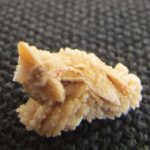
Compared with whites, blacks, and Hispanics, Middle Easterners are more likely to have predominantly calcium oxalate monohydrate stones, but less likely to have hydroxyapatite stones.
| The following article is part of conference coverage from the 2018 American Urological Association meeting in San Francisco. Renal and Urology News’ staff will be reporting live on medical studies conducted by urologists and other specialists who are tops in their field in kidney stones, prostate cancer, kidney cancer, bladder cancer, enlarged prostate, and more. Check back for the latest news from AUA 2018. |
SAN FRANCISCO—Race and ethnicity may affect kidney stone composition, according to study findings presented at the American Urological Association’s 2018 annual meeting.
Among kidney stone formers, stones containing more than 50% calcium oxalate monohydrate (COM) are significantly more common among Middle Eastern patients than among whites, blacks, and Hispanics, whereas stones containing more than 50% hydroxyapatite (HA), with or without calcium oxalate, are significantly less common in Middle Eastern patients than in whites, blacks, and Hispanics, investigators from Robert Wood Johnson (RWJ) Medical School in New Brunswick, New Jersey, and Einstein Medical Center in Philadelphia, reported in a poster presentation. The study, led by Ephrem O. Olweny, MD, of RWJ Medical School, included 749 kidney stone formers in the northeastern United States. The cohort consisted of 343 whites, 156 blacks, 170 Hispanics, 29 East Asians, 24 South Asians, 21 Middle Easterners, and 6 members of other groups.
Results showed that 85.7% of Middle Eastern patients had predominantly COM stones compared with 53.2%, 52.3%, 45.3%, 48.3%, and 70.8% of whites, blacks, Hispanics, East Asians, and South Asians, respectively. Predominantly HA stones occurred in 17.9%, 16.8%, 20.6%, 6.9%, and 4.2% of whites, blacks, Hispanics, East Asians, and South Asians, respectively, but not in any of the Middle Eastern patients.
“Overall, our findings suggest that kidney stone composition is determined by a multi-factorial process with dietary, metabolic and/or genetic influences; further investigation into specific mechanisms is warranted,” Dr Olweny and colleagues concluded.
Visit Renal and Urology News’ conference section for continuous coverage from AUA 2018.
Reference
Friedlander J, Patel R, Rhee K, et al. Kidney stone composition varies according to racial and ethnic background; multi-institutional analysis of stone formers in the northeastern United States. Data presented in poster format at the American Urological Association 2018 annual meeting, San Francisco, May 18–21. Abstract MP13-12.





